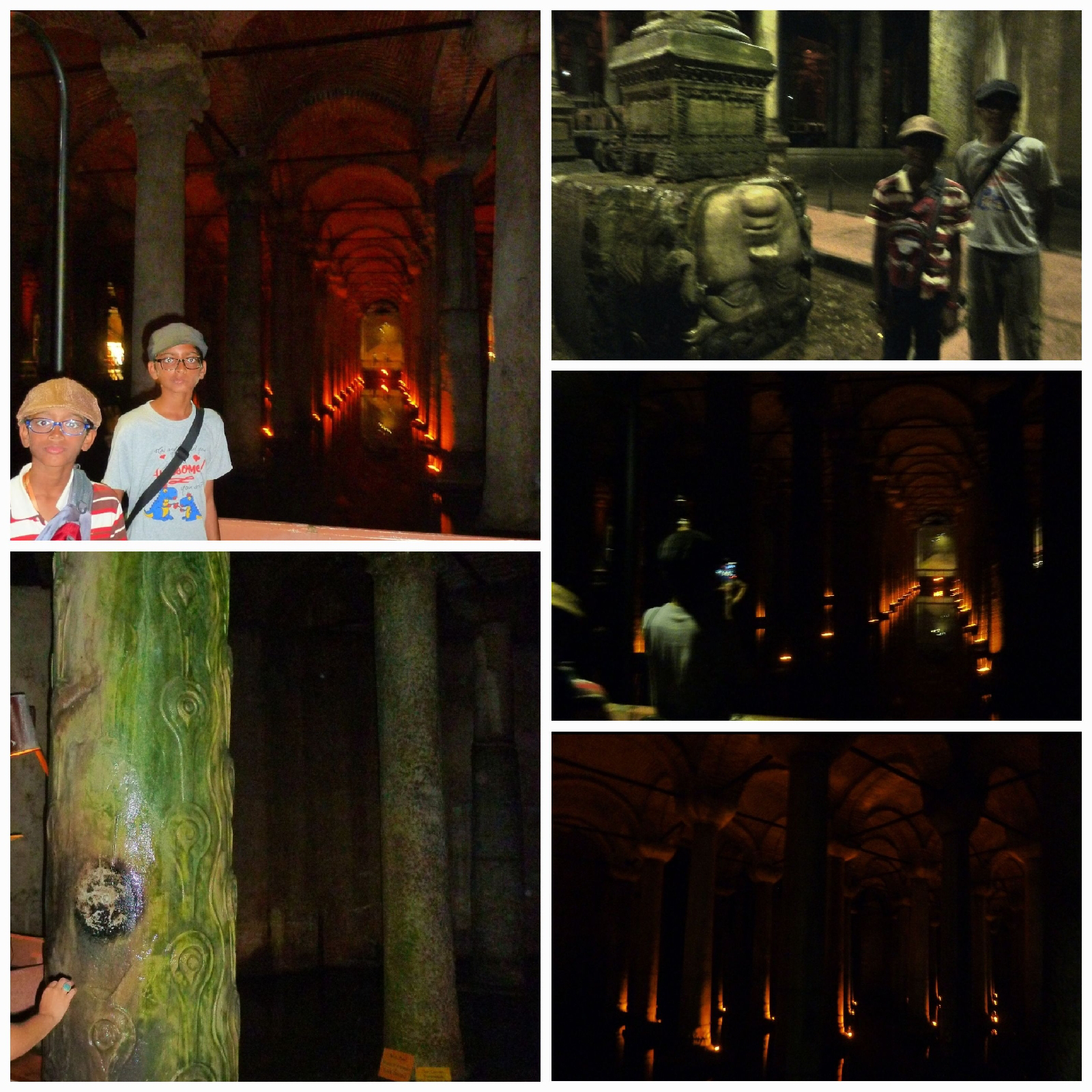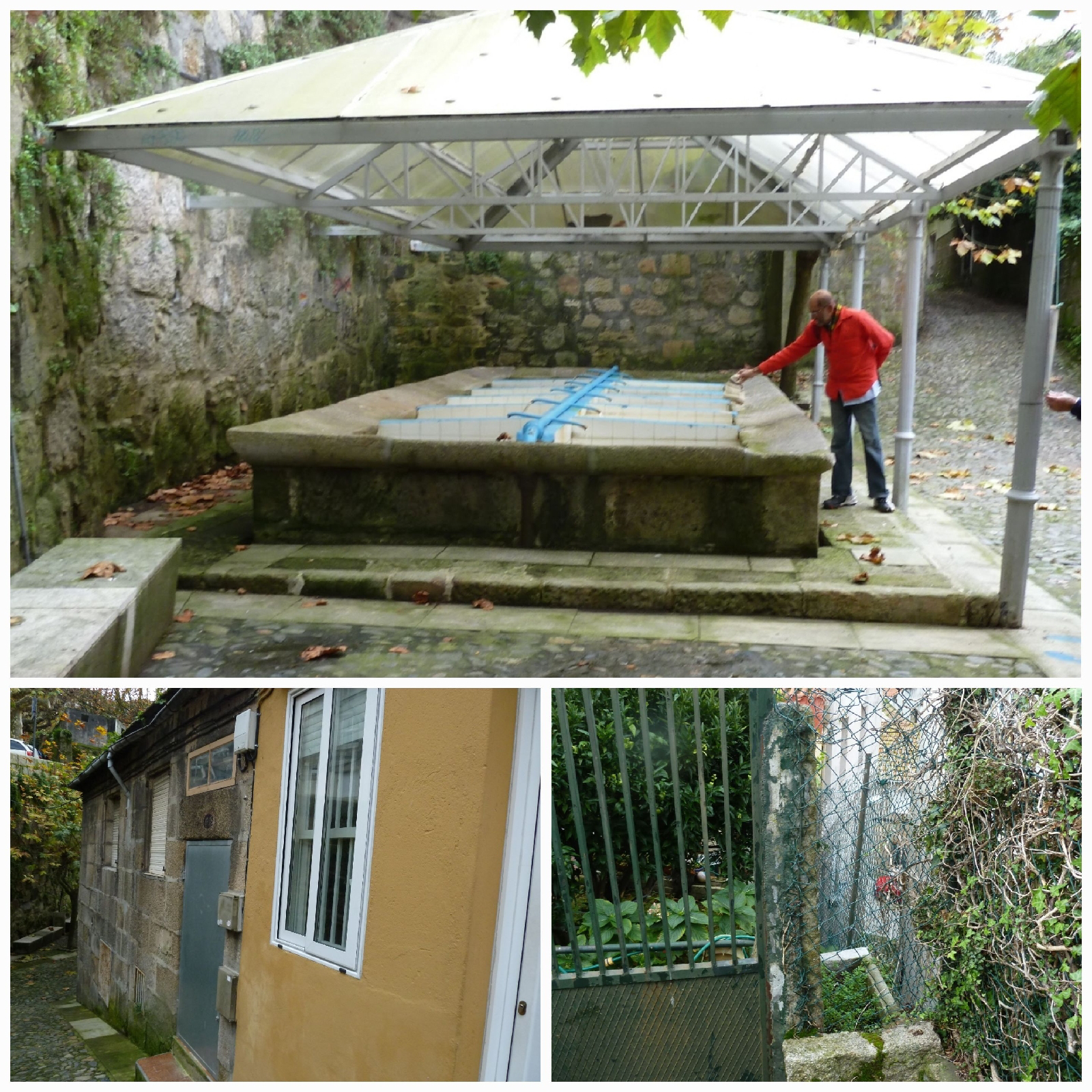Drowned in disbelief: a colossal underground cistern
The modern world is cognizant of hydroelectric dams that create huge reservoirs. The Three Gorges dam and Hoover dam come to mind. But a reservoir of huge proportions built underground fed by channelled water is quite mind boggling considering that it was built in the 6th century.
I am referring to none other than Istanbul’s Basilica cistern, and how it kept the city supplied with water since the sixth century. 55 steps down from the entrance you find yourself in a subterranean world beguiled by haunting music. You begin to feel the coolness, and you hear the spooky trickling and drip, drip of water, while adjusting your eyes to the creepy darkness. The dim lighting begins to define shapes around you. Rows and rows of pillars surround you as you walk on a platform built over about a foot of water, populated by carp, that covers the floor. Some puddles appear on the walkways, and you try to side step. You almost expect a face to peer from behind the 30 ft pillars (336 in all) bottom lit with amber lights, the reflections in the pool playing spectral tricks with their dimensions. As you get closer and more comfortable you feel like touching the pillars and then you begin to appreciate that each pillar that holds up the roof has a different design. In a darker section, almost towards the farthest end, a pillar seems to be upside down. Or, is it? It has two carved stone faces of Medusa, her hair made up of snakes. One look from her and you'll be turned to stone, according to Greek mythology. But, lets not be hasty. One face is placed upside down and the other sideways. You are safe. You will not be turned to stone.
Why are the pillars a hodge podge collection? Speculation has it that these columns are from elsewhere in the empire, perhaps discarded or from ruins, now repurposed.
If an Olympic sized swimming pool overwhelms you, just imagine 27 such pools that will be needed fill the underground cavern you are in. To hold that water in the walls need to be 4 meters thick and waterproofed! An engineering feat indeed. A great idea to keep the water cool and clean for usage at the Hagia Sophia!
Where did the water come from? It was channeled from a river through the Valens viaduct that we accidentally came across in another part of Istanbul (Detailed in my blog on Istanbul).
That is not the end of the story. This cistern is only a small part of a complicated system that includes not only viaducts, but also, fountains, water towers and canals.
Aqueduc de l'Horloge, Provence, France
Talking about underground cisterns, our host in St Chamas( Provence, France) living in the outskirts of the town, owned one. No, not ancient, but unassumingly practical and modern. They had a pump installed in their backyard which drew up underground water to fill up a tank ( covered cistern) to be piped into the household. But there was a limit that they could draw and on days they had staying guests, the tank ran the risk of running dry within a few hours. It seemed wise to check the availability of water before we turned on the laundry machine. The host would have to wait a certain amount of time before the pump is turned on again to be sure that it is not pumping up mud.
But this town also has a historical aqueduct, the Horloge, sporting a clock, which is now a tourist attraction. It is 23 meters high and offers a beautiful view of the lagoon and the plains surrounding it and, of course, St Chamas.
Another attraction of the town is the cave dwellings and wine cellars about which I'll propound in yet another blog.
Open cisterns
In my blog on Bali I referred to cisterns in the bathroom from which we scooped dippers of water to pour over ourselves. This type is found widely in Asia. But we also came across these in Spain. When we were exploring Vigo, we happened to walk through an area filled with old houses with only narrow alleys separating them. We chanced upon a series of cisterns that was actually where the townspeople did their laundry. Taps filled the cisterns which are now in disuse.
Repurposed aqueduct, San Teresa, Rio de Janeiro
In Rio, our AirBnB apartment, in the Lapa area, was very close to Santa Teresa, once an elite neighbourhood. We could either climb the ceramic tiled Selaron stairs uphill or take the vintage 32 passenger tram. The ride takes us on the 18th century Carioca Aqueduct that once served an important role in supplying the city with fresh water, with its main water supply coming from the Carioca river. We have walked under this structure several times not realising that the tram ran on it! Rio has just restarted the service, in time for the 2016 Summer Olympics, and we are some of the first few hundreds to experience it.
Maribor 'tower'
When we are in Maribor, Slovenia, exploring the wine town famous for its 100 year old grape vine we come across a small squat pentagonal structure. It is not exactly a tower. If you're thinking public washrooms, god forbid. It is a water cistern apparently built as part of the fortification of the city during the late 16th century.
Quirky cisterns that put a smile on your face
As we drive through Punjab, India, we are treated to playfully concealed overhead water tanks.















No comments:
Post a Comment
Comments are welcome